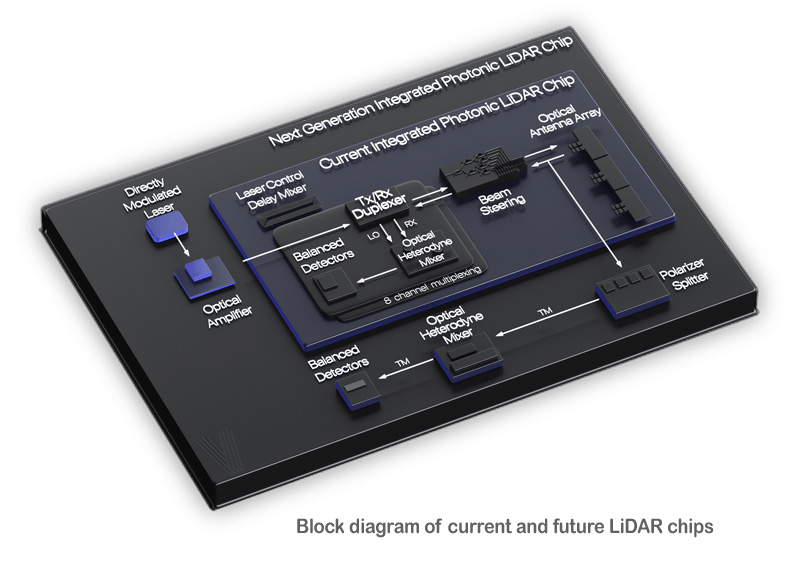News: Optoelectronics
6 January 2022
Voyant raises $15.4m in Series A funding to deliver 3D sensing with chip-scale LiDAR
Voyant Photonics of Long Island City, NY, USA has raised $15.4m in a Series A funding round led by UP.Partners and joined by earlier investors LDV Capital and Contour Ventures.
Containing thousands of optical components fabricated on a single chip, Voyant’s light detection & ranging (LiDAR) system enables the integration of an effective and exponentially more scalable LiDAR system than possible to date, it is claimed. LiDAR enables 3D vision across many industries including transportation, robotics, industrial automation, and consumer electronics. Voyant developer kits are now available for select customers on its waiting list.
Previously, LiDAR systems were fabricated using discrete mechanical and optical components, resulting in large and expensive solutions. Voyant says that its solution reduces the size and manufacturing complexity of LiDAR, and that its chips can pave the way for large-scale adoption of 3D sensing in the same way that CMOS image sensors enabled the accelerated growth of digital photography.
Voyant leverages commercially available and scalable semiconductor fabrication processes that combine thousands of optical and electrical components onto a single chip. This enables the firm to mass produce a LiDAR system similar to how computer chips are made, presenting the possibility of making it a ubiquitous technology for machine perception.

Co-founders Chris Phare and Steven Miller had been working on LiDAR chips for years at Columbia University’s Lipson Nanophotonics Group when they decided to commercialize their technology and launched Voyant Photonics. Their insight was to apply the silicon photonics technology used for optical data communications, the same technology that has made high-performance data-center fiber optics affordable. “When you fabricate a LiDAR system on a chip, the fabrication cost stays the same regardless of how many components you use,” says Phare. “We will soon be selling LiDAR systems for a few hundred dollars, and longer-term will sell them for less than a hundred dollars at scale.”
Voyant’s devices demonstrate a complete LiDAR system in a field-deployable package, using Voyant’s patented techniques for on-chip digital beam steering, optical signal processing, and laser control.
“When we started on our mission to make LiDAR a ubiquitous technology for machine perception, a lot of people said silicon photonics was not ready to leave the lab,” says Miller. “Our successful first milestones prove that we can build a complete LiDAR solution that meets industrial needs, using silicon photonics, and deploy it anywhere,” he adds.
“Now that we can make LiDAR systems on semiconductor chips, we can make them better and less expensive with every development cycle, similar to Moore’s Law for computer chips,” reckons Phare. “While the excellent performance of our first LiDAR chips surprised even us, this is just the beginning. Just like with computer chips and camera sensors, every design iteration will get better,” he adds.
“Ubiquitous 3D vision is critical to enabling the transformation of the world of transportation and beyond,” says Ben Marcus, managing partner of UP.Partners. “Their solution will leapfrog all competitors and deliver a scalable solution to enable 3D vision,” he adds.
“We are delivering the first LiDAR systems of their type powered by an integrated photonic chip,” claims Peter Stern, a serial entrepreneur with a background in creating military-grade LiDAR who started as an advisor to Voyant and recently became CEO. “Our diverse customers in robotics, AGVs, mobility, industrial automation and security all have one thing in common - they are building solutions that need to understand the world around them… That is what our LiDAR systems provide.”








